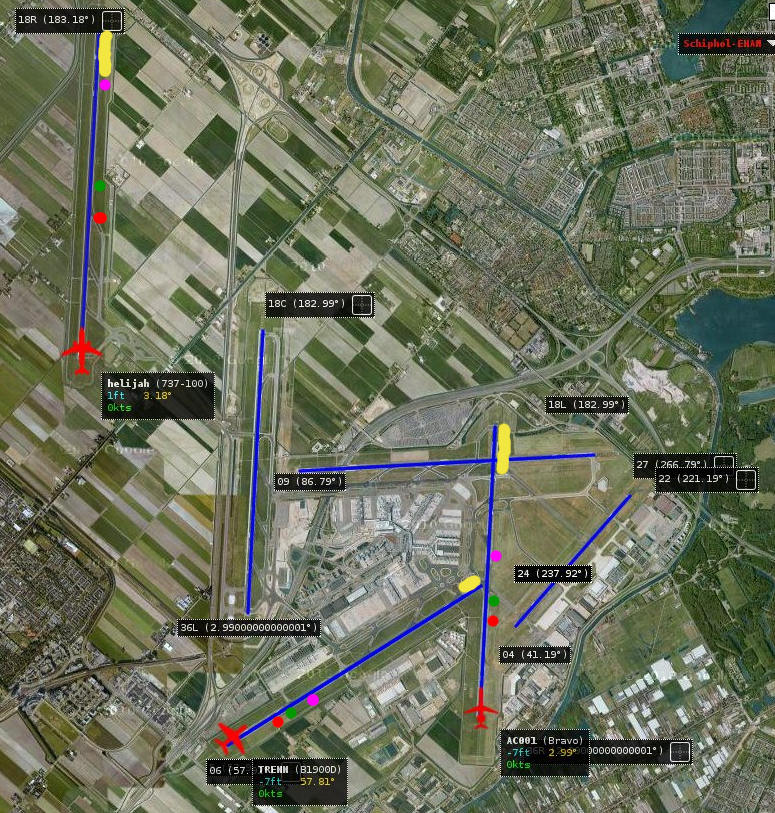User:Ac001/Takeoff
Jump to navigation
Jump to search
| Flight College |
|---|
Work in progress
Take Off
The map below shows three classes of aircraft waiting to take off at EHAM Amsterdam.
- Top left on 36L is a 737 Airliner (helijah)
- heavy aircraft for international 10 hr flight
- takeoff speed is 140 knots into headwind
- Bottom left on 06 is a Beechcraft twin prop (trennor)
- nimble small regional aircraft for 1 hour flight
- takeoff speed is 90 knots into a slight side wind
- Bottom right on 36R is Citation Bravo twin jet (ac001)
- small jet for euro hopping on 3 hour flight
- takeoff speed is 120 knots
Strategies
- Each pilot has calculated the speed required to actually take off based on aircraft performance, runway length, weight, air pressure and many, many other factors some featured more below.
- Each pilot has shortened the runway by a "safety margin" (yellow lines) that has been deducted from the runway length, a "gut feel" for headwind, alignment in fog, etc.
- The red dot indicates the point that the aircraft is at enough speed it can safely take off with ONLY one engine.
- The green dot is the point where the aircraft has to take off as there is not enough runway left to stop.
- The purple dot is the hypothetical point where the aircraft would safely stop and well within runway limits.
- 737
- This aircraft is heavy with passengers, cargo and fuel and needs some momentum, and therefore requires more stopping distance.
- The aircraft is just within the "margins" of runway/takeoff parameters.
- The throttle would be set to TOGA ie max.
- Beechcraft
- This aircraft is light and requires little runway to take off at a slow takeoff speed
- Throttle not full on as there is a lot of runway
- The aircraft could have entered the taxiway halfway down the runway, and still conducted the takeoff on a shorter runway.
- Bravo
- The lighter jet aircraft is taking advantage of the runway length.
- The plan is accelerate slower and take off further down the runway with a Flex Temp takeoff, saving fuel, engine wear and less noise.
- 737
General Info
Below are some notes on the 'real world' scenario, some of the problems and techniques to get familiar and is biased towards jet aircraft and airliners.
- Airliner
- First the aircraft is aligned to the runway and positioned. Parking brakes on.. this is an effort.. then pre-take off checklists
- Clearance = ATC has said clear for take off
- The engines are fired up to 10% with the brakes ON. this will give time to warm up the engine and pumps, air bubbles.
- The 25% period, where the jets are fired up more. Its not full on yet to avoid blowouts caused by air bubbles with in jet..
- There is stabilized flow thought the engines and the aircraft is accelerating down the line...
- v1 is achieved.. meaning we can take off.
- v2 the point of having to take off is reached.. We can stop now. Before this point is a "rejected takeoff"
